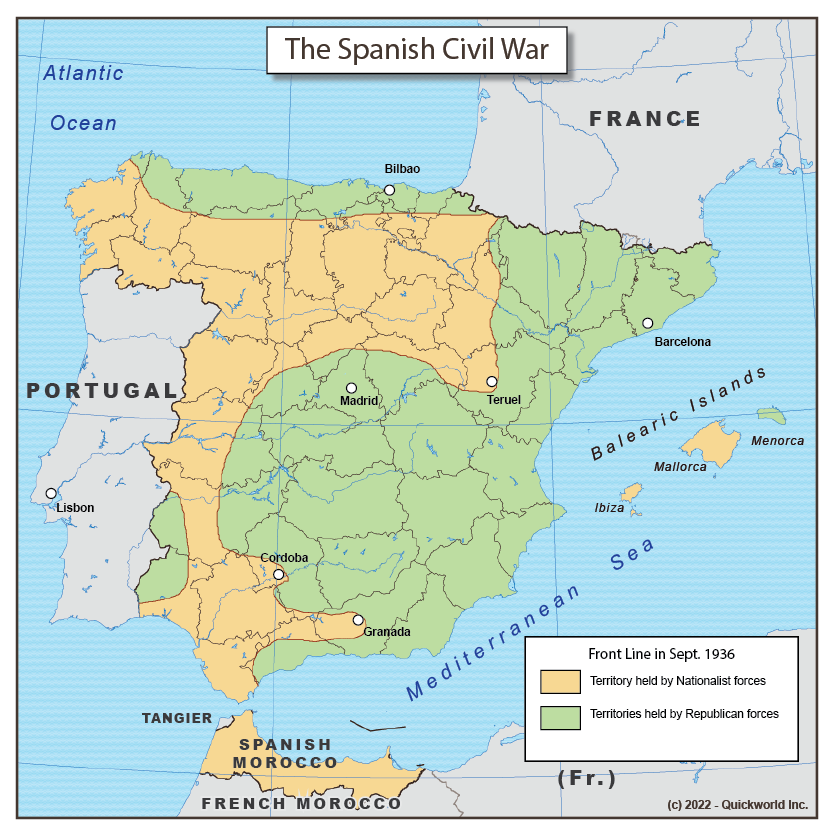It is sometimes said that no war is more cruel than a civil war, because it opposes neighbours who previously lived in peace, relatives who used to be close, and it creates deep wounds that cannot be healed easily: it is certain to create a winner and a loser in the country.
In this respect, the Spanish Civil War is a great example of a nation, much advanced by economic and political standards, that fell into a conflict between two irreconcilable political factions whose consequences were disastrous: at least half a million Spaniards killed, millions more wounded, and an entire society with wounds to lick for many decades.
Major disagreements between monarchists and republicans had started in the 19th Century, and by the time the Second Republic was declared in 1931, the monarchist faction was looking to the former splendor of Spain, articulated around the Catholic church and the Army. Republicans were for the most part seduced by the radical ideology that was implemented in the Soviet Union. While firmly in power, the Republican government could not count on the help of Western democracies, who feared communist ideology, while the Monarchists, also known as Nationalists, were aligned with Fascist Italy and Nazi Germany. The fall of major generals in 1936 into the Nationalist camp started a brutal war which, after three years, resulted in the total victory of the Nationalists.
A forty-year dictatorship by General Franco ensued, followed by the return of the Monarchy and a new democratic constitution. While Spain has been politically stable in the 21st Century, old wounds are still visible, in particular in the strife for autonomy of the Catalunya and Bask regions.
The Spanish Civil War


